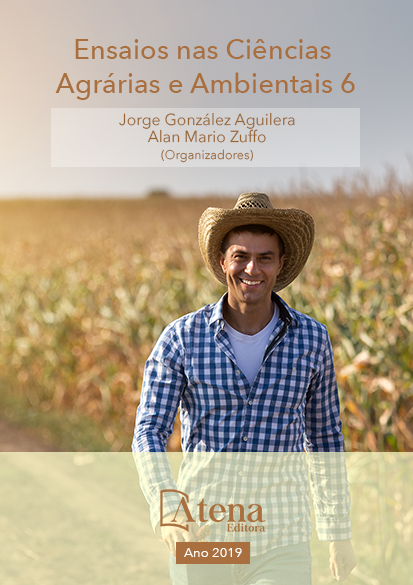
Manejo do Nitrogênio no milho: efeitos no desenvolvimento da planta e produtividade de grãos
O manejo adequado da adubação
com nitrogênio é fator estratégico para o
incremento da produtividade de grãos do
milho. Assim, objetivou-se avaliar doses e
fontes de nitrogênio aplicado em cobertura no
desenvolvimento vegetativo e produtividade de
grãos de milho cultivado no Sudeste Paraense.
O experimento foi realizado no município de
Parauapebas, no ano agrícola 2016/2017,
em Argissolo Vermelho-Amarelo corrigido
com calcário dolomítico à 15 meses antes do
plantio. O delineamento experimental utilizado
foi em blocos casualizados, em esquema
fatorial 5x2, sendo cinco doses de nitrogênio
(0, 45, 90, 135 e 180 kg ha-1) e duas fontes
nitrogenadas (ureia e sulfato de amônio), com
quatro repetições. Os resultados obtidos para
os atributos de crescimento e de produção
avaliados não foram significativos para as
doses aplicadas, independente da fonte, exceto
a variável diâmetro de colmo para ureia (Ŷ =
23,3992 - 0,00638x) que resultou em resposta
linear decrescente. A produtividade de grãos
obtida no presente estudo foi superior à média
estimada para o Estado do Pará.
Manejo do Nitrogênio no milho: efeitos no desenvolvimento da planta e produtividade de grãos
-
DOI: 10.22533/at.ed.4211916013
-
Palavras-chave: Práticas culturais. Ureia. Sulfato de amônio. Zea mays.
-
Keywords: Cultural practices. Urea. Ammonium sulfate. Zea mays.
-
Abstract:
The appropriate manage of the
manuring with nitrogen is strategic factor for
the increment of the productivity of grains of the
corn. Thus, it aimed to evaluate rates and sources of nitrogen applied in covering
on the vegetative development and productivity of corn grains cultivated in the
Southeastern of Pará state. The experiment was accomplished in the Parauapebas
city, in the agricultural year 2016/2017, in Red-Yellow Ultisol corrected with dolomitic
lime 15 months before the planting. The experimental design used was in randomized
blocks, in factorial scheme 5x2, being five rates of nitrogen (0, 45, 90, 135 and 180
kg ha-1) and two nitrogen sources (urea and ammonium sulfate), with four repetitions.
The results obtained for the growth attributes and of production evaluated were not
significant for the applied rates, independent of the source, except the stem diameter
parameter for urea (Ŷ = 23,3992 - 0,00638x) that resulted in decreasing lineal answer.
The productivity of grains obtained in the present study was higher than the estimated
average for the State of Pará.
-
Número de páginas: 15
- Tiago de Sousa Santiago


